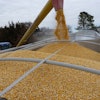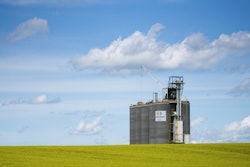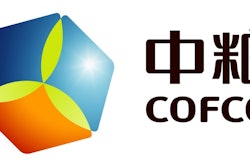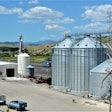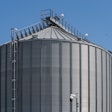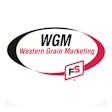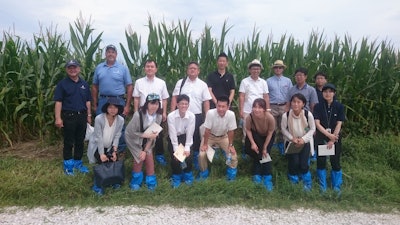
Even though members of this USGC trade team of Japanese government regulators work on biotech corn safety dossiers daily, it was the first time most of them had seen a corn field or a grain elevator.
Face-to-face conversations and seeing U.S. corn farms, elevators and export facilities firsthand will help a team of Japanese government regulators make more informed decisions and facilitate an uninhibited flow of U.S. corn and co-products from the United States to one of its largest and most loyal customers.
The U.S. Grains Council (USGC) annually schedules teams of Japanese regulators involved in the food, feed and environmental approvals of biotech corn events to travel to the United States for just this purpose. While these regulators may have limited knowledge of the U.S. corn value chain, their recommendations or decisions could potentially slow down entire approval or regulatory processes.
“These meetings provided Japanese regulators with information on the biotech corn traits and products in the pipeline for entry into the Japanese regulatory system in the near future,” said Tommy Hamamoto, USGC director in Japan, who accompanied the team. “Discussions with the U.S. grain value chain also demonstrate how Japanese regulatory approvals and regulations need to be able to work with the real world of how U.S. corn is produced, transported and exported.”
This year’s team traveled to Washington, D.C., Missouri and Louisiana in August to meet with U.S. government regulators, biotech seed companies and biotech industry organizations as well as U.S. corn farmers and agribusinesses involved in the production, distribution and exports of U.S. corn to Japan.
“For most of the participants, this was their first time to see a corn field or a grain elevator, even though they work on biotech corn safety dossiers on a daily basis,” Hamamoto says. “These in-person visits will help these team members make better decisions based on what they heard about grain production and how U.S. farmers and grain handlers work to maintain and improve grain quality.”
日本监管机构也明白美国注册ulators and industry representatives are doing to address unintentional low level presence of unapproved events in commercial corn supply. While major issues in this area are uncommon, these discussions help keep corn trade between the United States and Japan open and functioning.
Both the United States and Japan have science-based and well-functioning regulating systems related to biotech corn, and both countries are also in the process of evaluating how to regulate plant breeding innovations, including gene-edited products. Ministries within the Japanese government signaled earlier this year that they will not consider organisms produced using gene editing as genetic modification, providing reassurance for continued market access for U.S. farmers to one of their largest international markets.
Japan currently ranks as the second largest market for U.S. corn, purchasing more than 12 million metric tons (472 million bushels) thus far in 2018/2019 (September 2018-June 2019) - a 21 percent jump year-over-year. Japan has also increased purchases of U.S. DDGS by 11 percent this marketing year, ranking as the ninth largest buyer at 418,000 tons. Imports of 6.46 million gallons of U.S. ethanol have also risen by 38 percent year-over-year and the first shipment of ETBE produced with U.S. corn-based ethanol arrived in Japan in July. These strong export sales further underpin the importance of continued conversations between the Japanese government and end-users and the U.S. government, farmers and agribusinesses.




